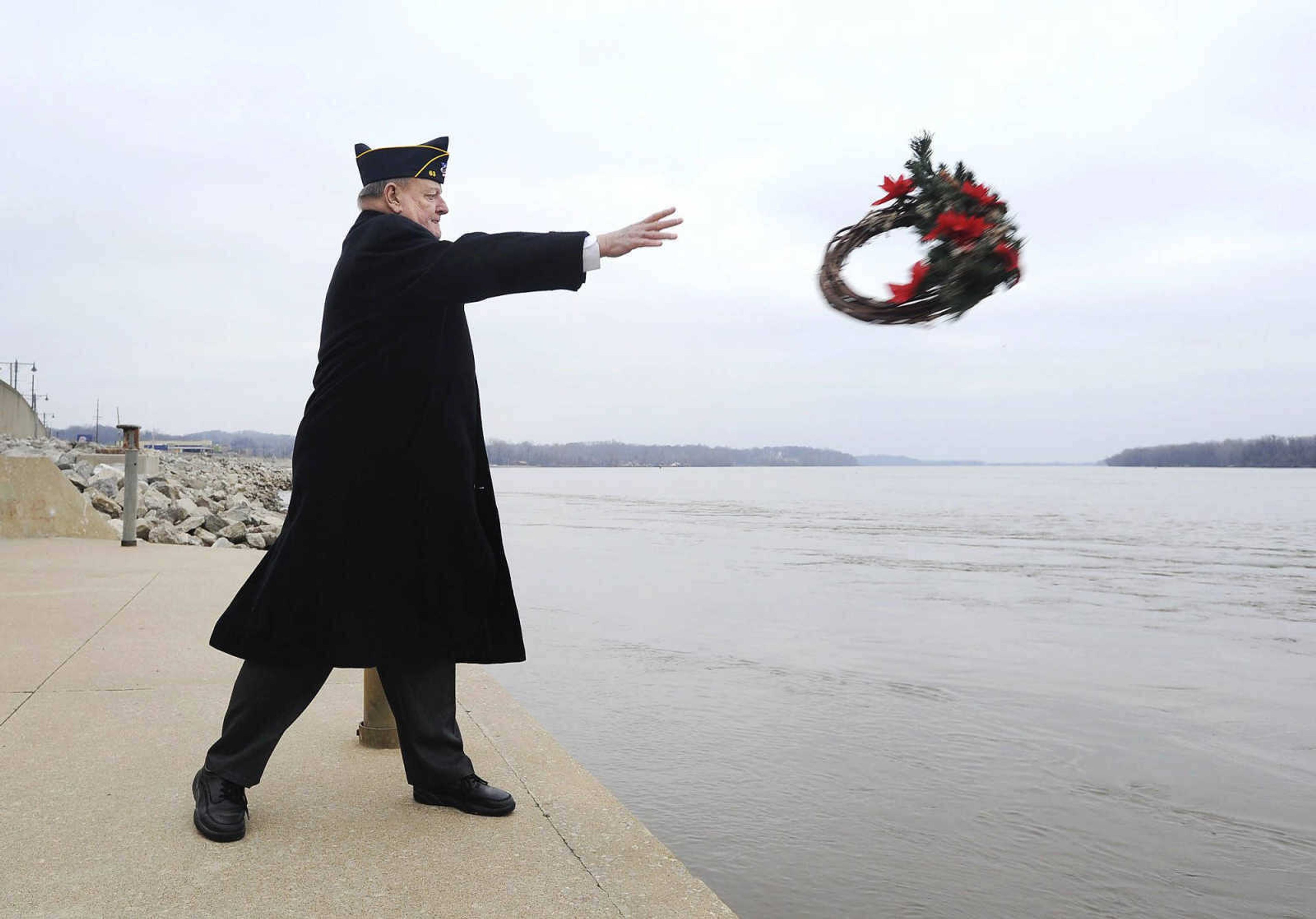GUEST COLUMN: Remembering Pearl Harbor and a Cape Girardeau son 78 years later
7:55 a.m., Dec. 7, 1941. A sleepy Hawaii had awakened to another beautiful Sunday morning. U.S. military personnel were going through their morning routines, with countless sailors, Marines, and Army personnel at attention, bugles sounding the daily raising of the Stars and Stripes...
7:55 a.m., Dec. 7, 1941. A sleepy Hawaii had awakened to another beautiful Sunday morning. U.S. military personnel were going through their morning routines, with countless sailors, Marines, and Army personnel at attention, bugles sounding the daily raising of the Stars and Stripes.
It would be the last moment of peace Americans knew for the next 44 months.
Launched in two waves, 353 Japanese attack planes from six carriers thundered overhead. They bombed and strafed Americans who didn't know, 'till that moment, that a formidable eastern empire, under a military dictatorship allied with Adolf Hitler's criminal regime, had planned this attack for many months. The Japanese Navy attack fleet had launched from their home islands weeks before.

A son of Cape Girardeau had enlisted in the Navy, turning 19 days before the attack. Seaman Second Class Lloyd Dale Clippard, was aboard the USS Utah, (sometimes called "the forgotten battleship of Pearl Harbor"), where he was being trained for duty as an electrician. Clippard's father worked at the shoe factory on North Main Street, a 20th-century mainstay of our town's economy now long gone.
The attack on the USS Utah came swiftly, at 8:01 a.m., as she took two torpedoes within the first minutes. Lloyd Clippard was one of 58 Utah men to perish in the opening minutes of America's conflict. One writer described the stricken battleship: "By 8:12 a.m., the mooring lines that held the Utah in place snapped, 'like whips whistling through the air' one observer wrote, and the battleship rolled over, its masts digging into the muddy floor of Pearl Harbor." Clippard was the first of Cape's many casualties during the war. The next year, the Veterans of Foreign Wars established a post here and named it for Seaman Clippard. A most fitting honor.
Briefed on the stunning attack in London, British Prime Minister Winston Churchill related that he later "slept the sleep of the saved," knowing that the Americans -- "the New World, with all its power and might" -- were now in the war. "So we have won after all," Churchill mused, reflecting how lonely Britain had for so long stood alone against Hitler's "hideous apparatus of aggression." Churchill told associates, "Hitler's fate is now sealed, and the Japanese will be ground to powder."
A happy coincidence quickly came to light. While the Japanese did terrible damage to our fleet, most of the assets stricken or lost were battleships, cruisers and the like. What the Japanese were really after was our aircraft carriers. All these magnificent instruments of American air power were away from Pearl, "under way," in the Navy's charming phrase, and so survived, much to Japanese chagrin. There can be no question that the attackers had joined complete surprise to stunning tactical success. When it came to Japan's long-term strategic goals -- to knock the American Navy out of the Pacific -- to say the least: not so much. Aboard the decks of one of those carriers, a scant five months later, a stunned world would see accomplished what nearly all had thought impossible. B-25 Mitchell bombers launched from the carrier commanded by Admiral William "Bull" Halsey, and the Japanese would begin to get their answer: The famed Doolittle Raid on Tokyo, as U.S. bombs rained down on Japanese who'd been told this would never happen, in one of the great, heroic chapters of the war.
In Pearl Harbor today, visitors find one of America's most moving memorials, the USS Arizona. During the attack, a bomb dropped straight down the Arizona's stack, square into the weapons magazine. The titanic explosion, rocketing into the air, was caught for all time in stunning film footage. In seconds the fatally wounded, blazing battleship rolled over and sank, trapping 1,177 Marines and Naval personnel in their watery tomb. Those who didn't burn alive were drowned. This was nearly half the American death toll that awful morning.
Today, visitors take a small boat out to the Arizona memorial. Stepping on it, one looks down through the clear water to see the dark steel of the enormous hull. Two facts arrest the attention: First, that hull is clearly seen, as it isn't more than about 10 feet below the surface. Second, 78 years later, every few seconds, oil bubbles up from the doomed ship. The names of all the Arizona's dead are inscribed on the white walls of the solemn, simple memorial. Except for the stone-hearted, all who gaze upon that wall are deeply moved -- more than a few, to tears.
Short yards away from Arizona, the 877-foot long USS Missouri, an Iowa-class battleship, lies at anchor. On these magnificent decks, Gen. Douglas MacArthur took the Japanese instrument of surrender, before representatives of all the Allied powers at war with Japan. At the ceremony's conclusion, an awesome display of 2,000 Allied aircraft thundered overhead, underscoring the point. So here, with these two fated battleships side by side, we see the beginning, and the ending, of the American war.
Japanese Admiral Isoruku Yammamoto, who had planned and commanded the attack, had studied at Harvard and was a student of America and our people. In the immediate aftermath, he uttered these fateful words: "I fear that all we have done is to awaken a sleeping giant and fill him with a terrible resolve."
A visit to Hawaii should include a trek up to see the majesty of "The Punchbowl" -- the American National Cemetery of the Pacific. There, resting on a bench in the long-extinct volcano, one looks over the solemn beauty of row upon row of white crosses and Stars of David. You will find these words inscribed in stone:
They shall not grow old, as we who are left grow old.
Age shall not weary them, nor the years condemn.
With the going down of the sun, and in the morning,
We shall remember them.
Peter D. Kinder is the former lieutenant governor of the State of Missouri. He resides in Cape Girardeau.
Connect with the Southeast Missourian Newsroom:
For corrections to this story or other insights for the editor, click here. To submit a letter to the editor, click here. To learn about the Southeast Missourian’s AI Policy, click here.










